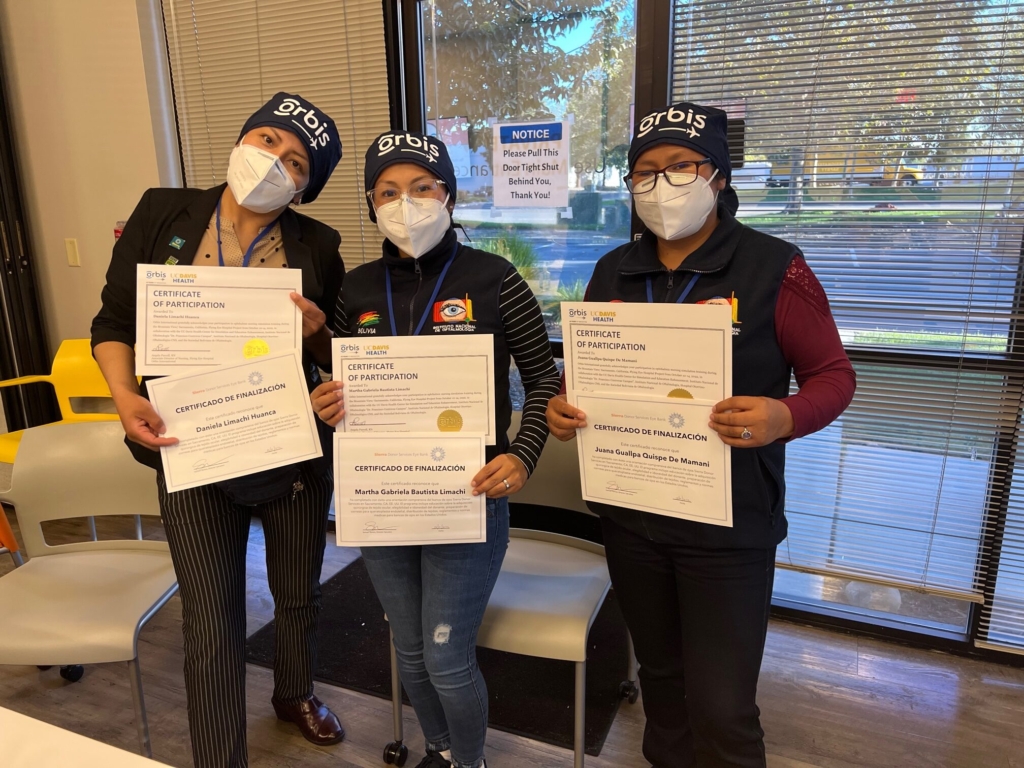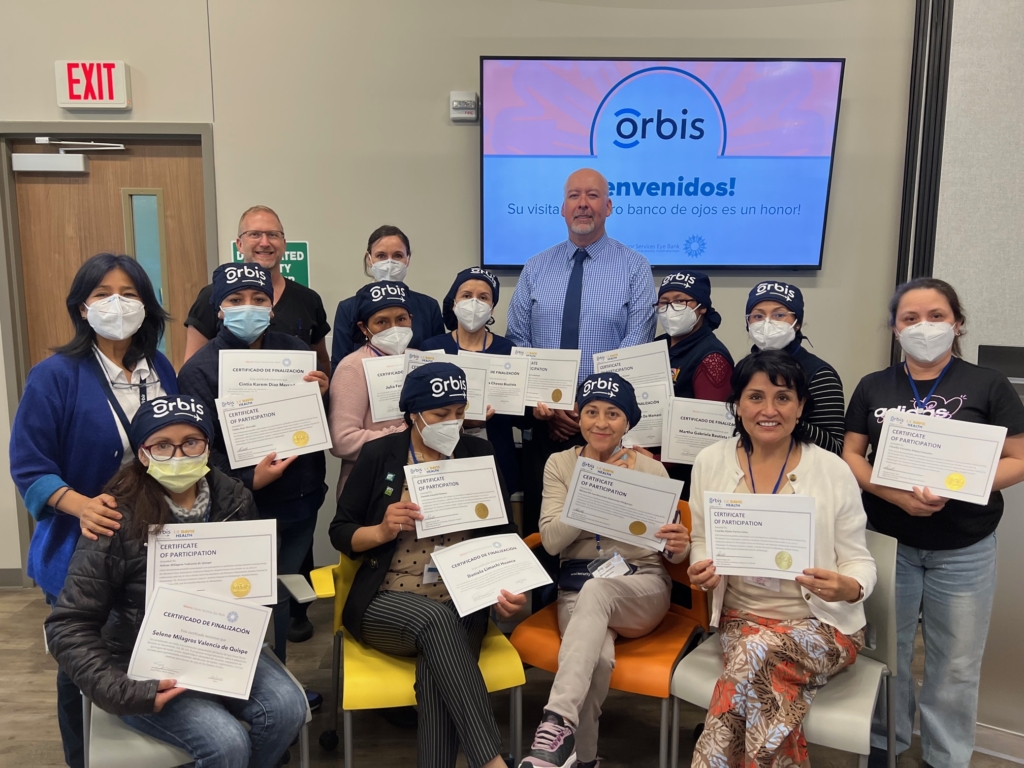ORBIS International
Sierra Donor Services Eye Bank (SDSEB) was proud to collaborate with Orbis International on a two-week training project with UC Davis Health on board the Flying Eye Hospital – a fully accredited ophthalmic teaching hospital on board a plane. Nearly 30 ophthalmic nurses and biomedical engineers from Bolivia, Chile, and Peru were welcomed by our SDSEB team. Sam Ramos, Executive Director of SDSEB, and his team led the group on an unforgettable journey through the process of eye donation in the U.S. and eye banking best practices.
The visit began with an introduction to the DCI Donor Services, Inc. structure and the work that all divisions of the organization do to save and enhance lives in local communities and around the world. We transitioned our discussion to the highly developed donation process in the U.S. and some of the challenges currently encountered in the South American countries being represented. We emphasized on our relationships with hospitals for referrals and how our call center is focused on the importance of the donor wishes along with the support of their family. Our team was able to expand on donor screening and eligibility standards that are followed along with recovery and infectious disease testing.
“It was humbling to hear about the long waiting list of patients in need of a life changing cornea transplant in South America, but reassuring to see the passion in all the nursing staff and attentiveness to learning new methods that they can use to implement change that will ultimately benefit their communities.“ – Samuel Ramos, Executive Director, Sierra Donor Services Eye Bank
Next, we moved on to practical training that included a simulated donor physical examination on our training mannikin. We also demonstrated a cornea recovery and discussed our protocols as well as current medical standards for Eye Bank Association of America (EBAA) accredited eye banks.
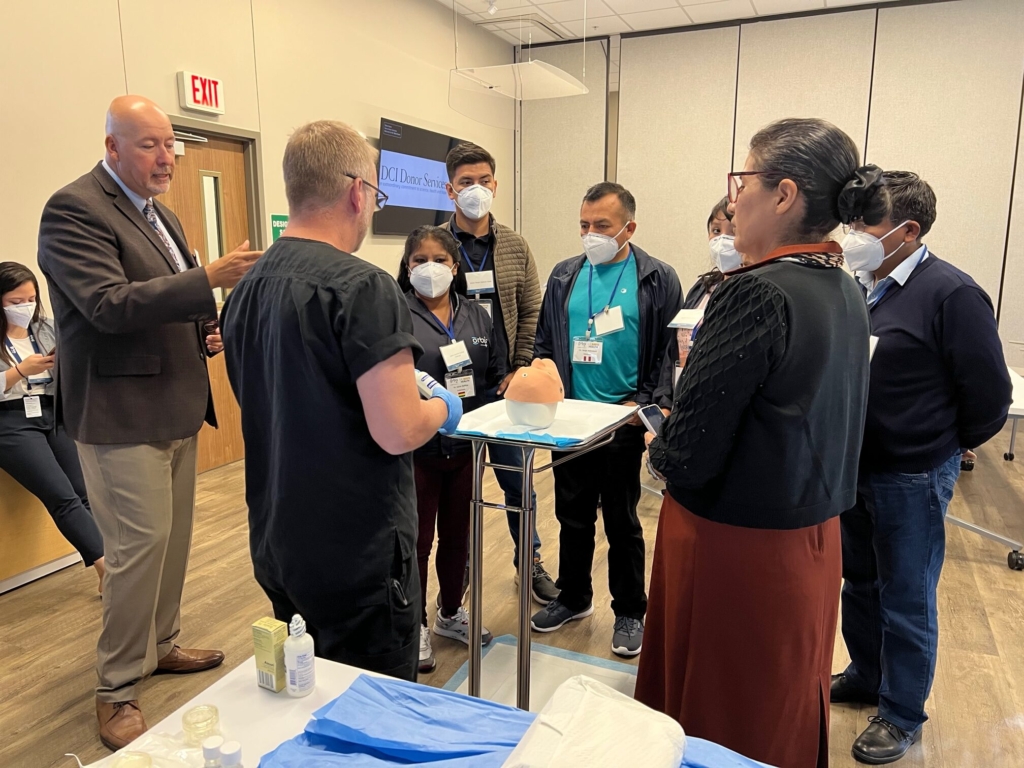
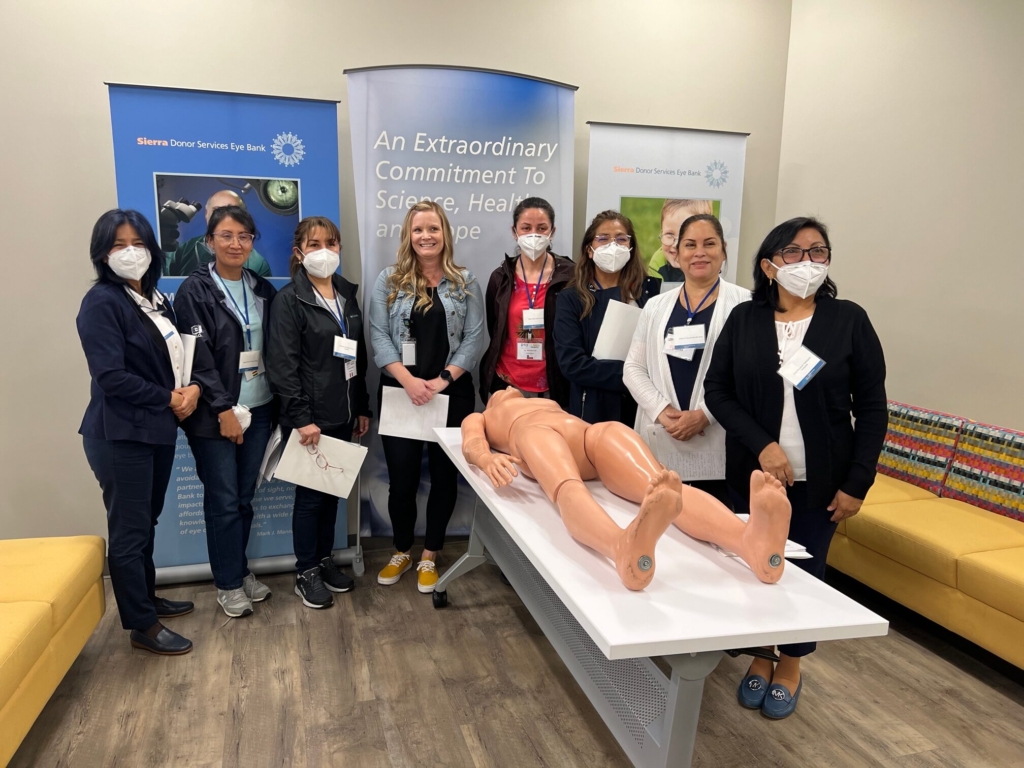
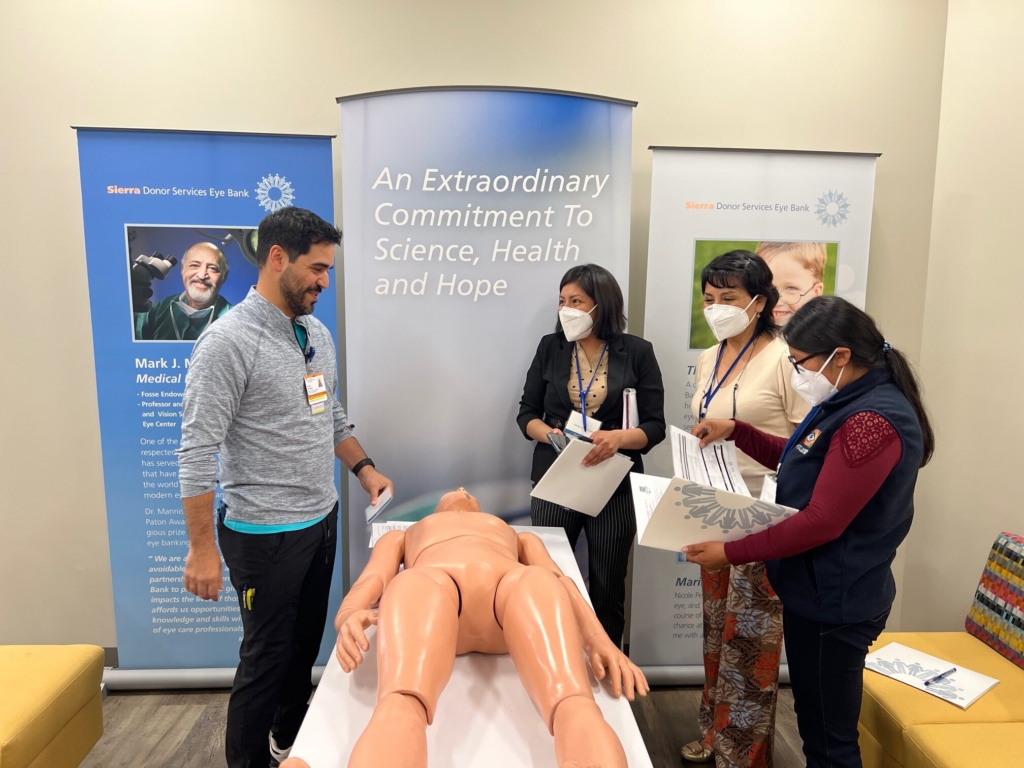
Moving through the day, we walked them through tissue evaluation, medical chart review and distribution of corneal tissue. They received a tour of our facility and were very intrigued with our equipment, facilities, and the extent of what it takes to ensure the suitability and safety of the ocular tissues we distribute. After the tour, the visiting nurses learned basic principles of evaluating corneas using the various microscopes in our lab and had an opportunity to put their new skills to use by identifying anatomical abnormalities on corneas not suitable for transplant.
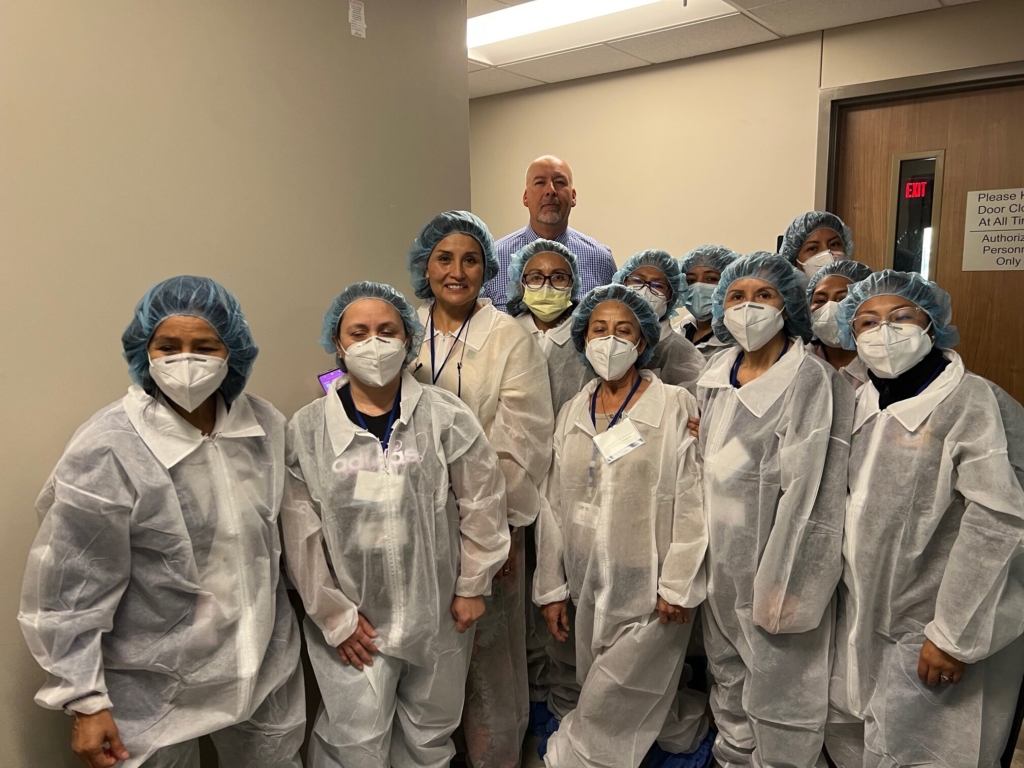
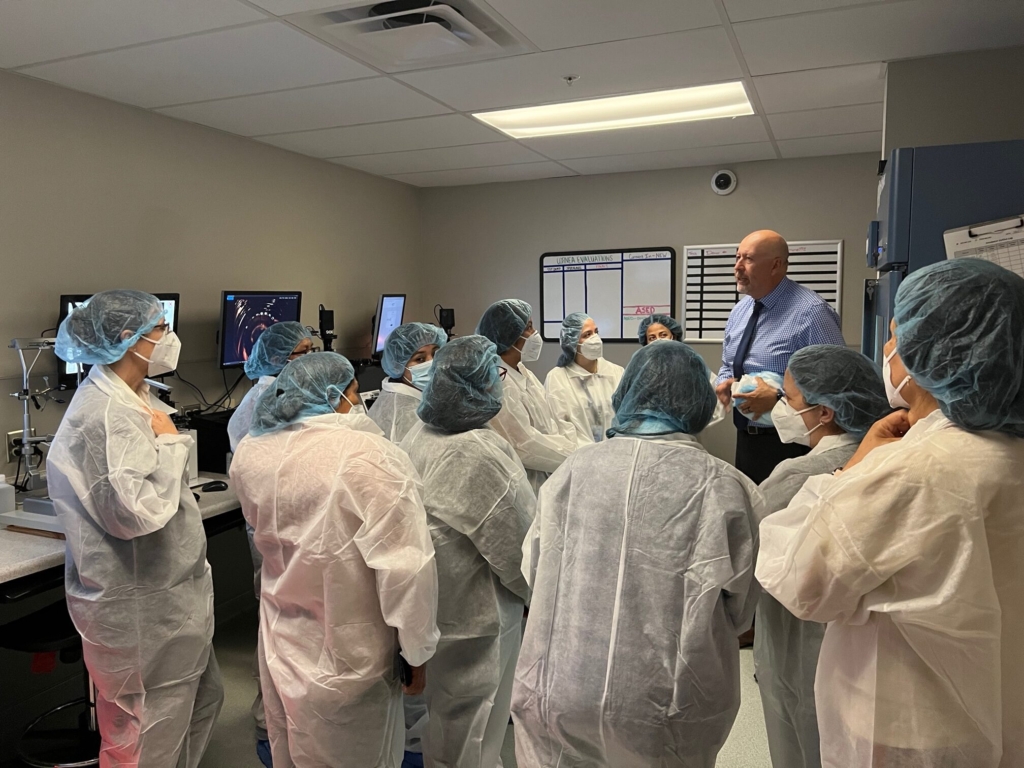
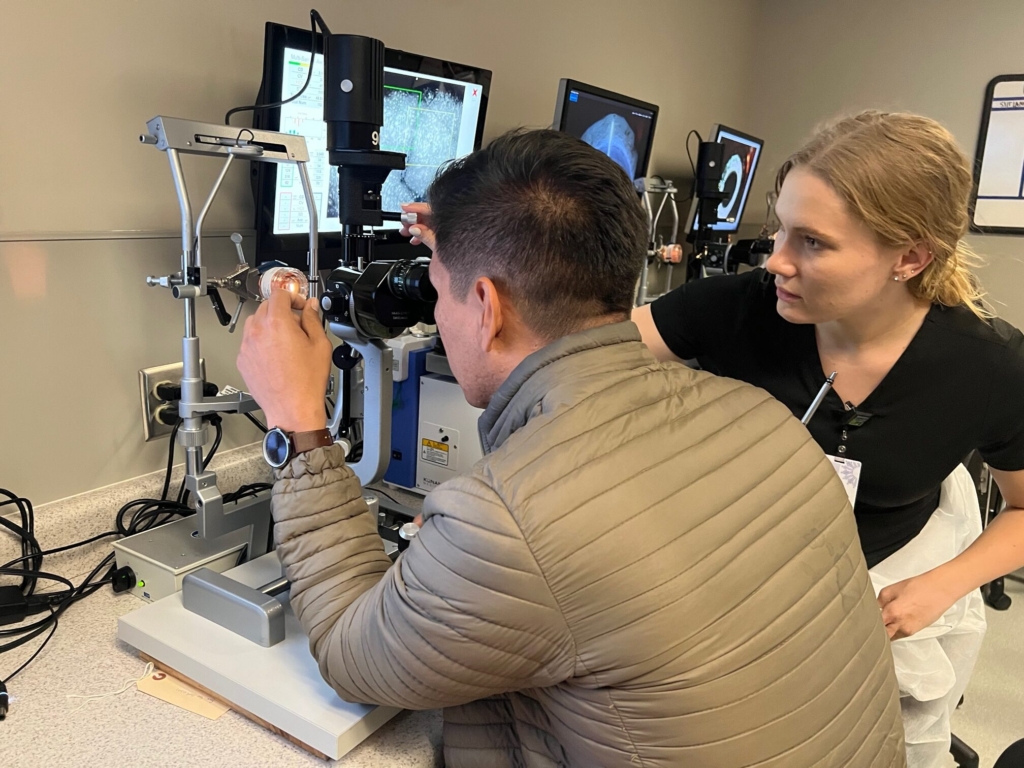
One of our last demonstrations of the day highlighted cornea processing at the eye bank as they watched our staff perform a DMEK peel and DSAEK cut. There was good discussion about the role of the eye bank in cornea transplantation surgeries and they were able to appreciate how delicate corneal tissue is and the work that goes into each processing event. Different types of corneal transplantation techniques were reviewed and how we can most effectively use tissue for each to maximize the donated gift.
Our day of training concluded with a final hands-on experience where each nurse was given the opportunity to dissect a corneoscleral rim off of a whole eye. It was the highlight of their day as many of them had never examined a whole eye, let alone had the opportunity to recover a cornea and study the internal structure of the eye.
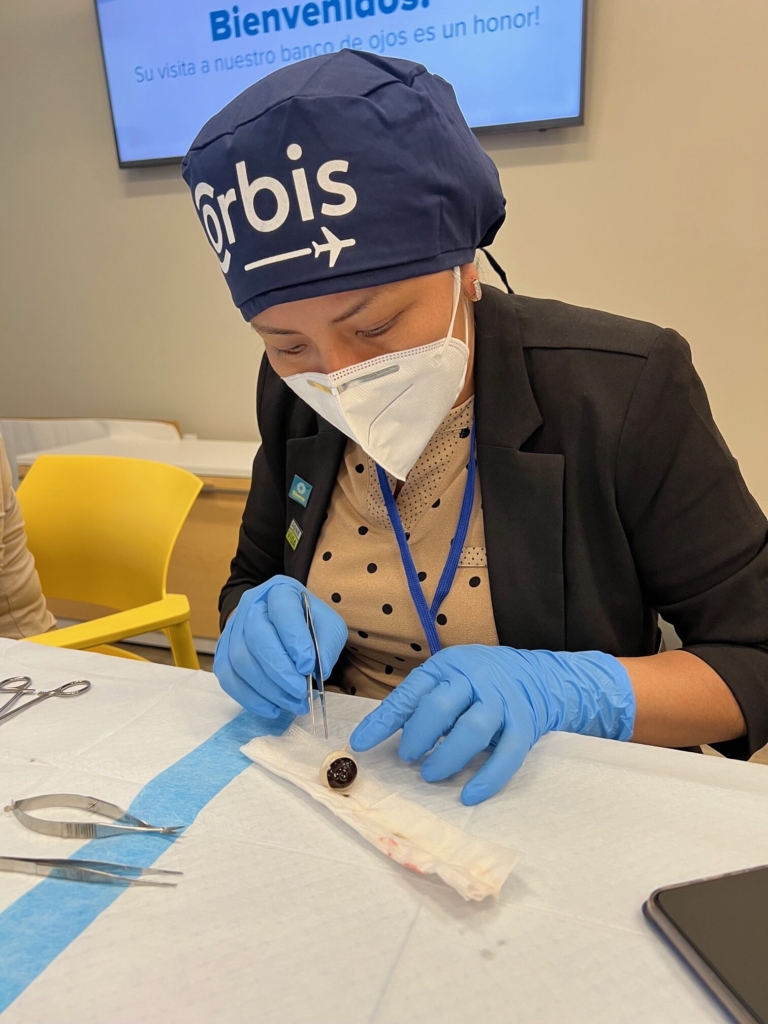
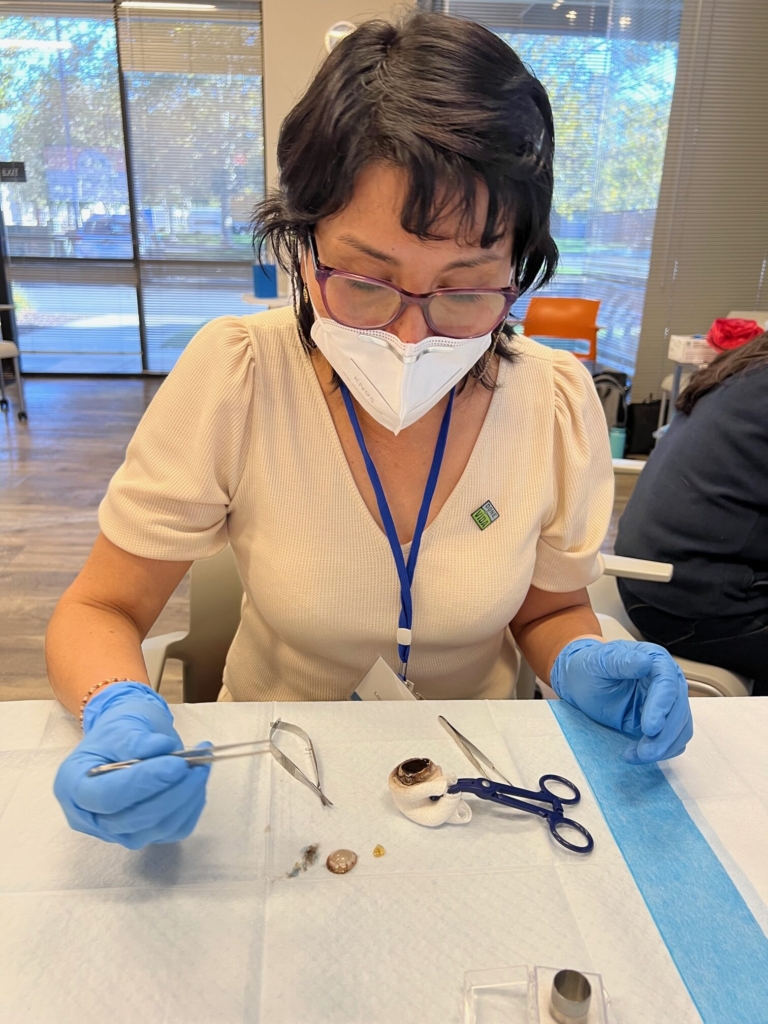
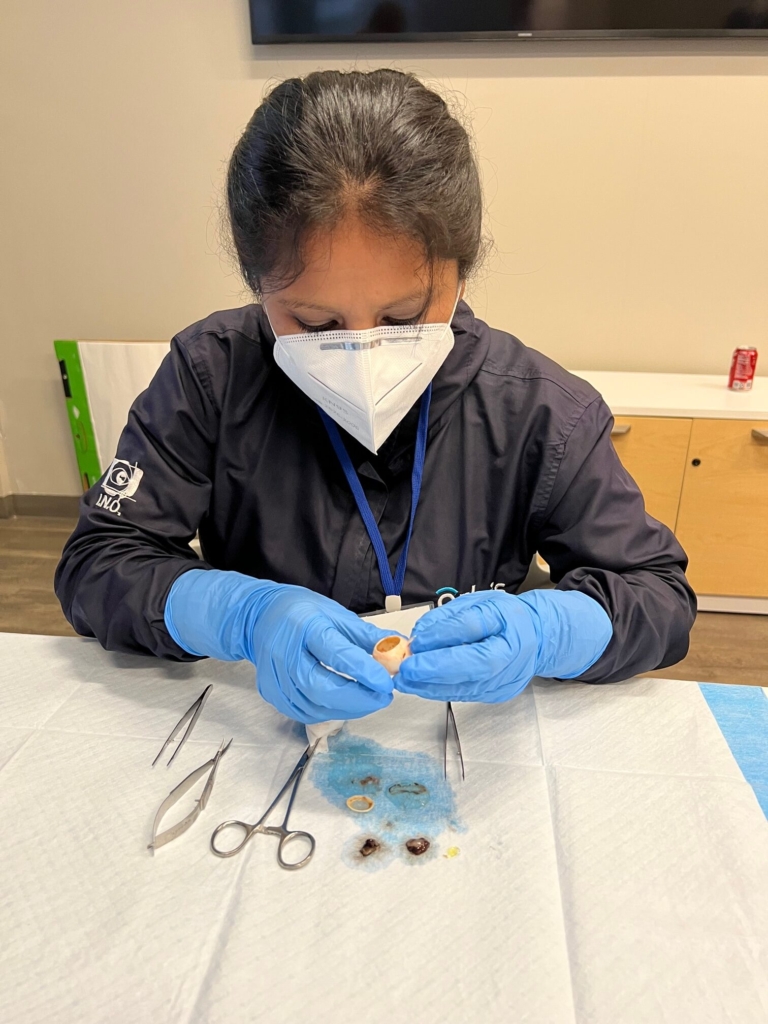
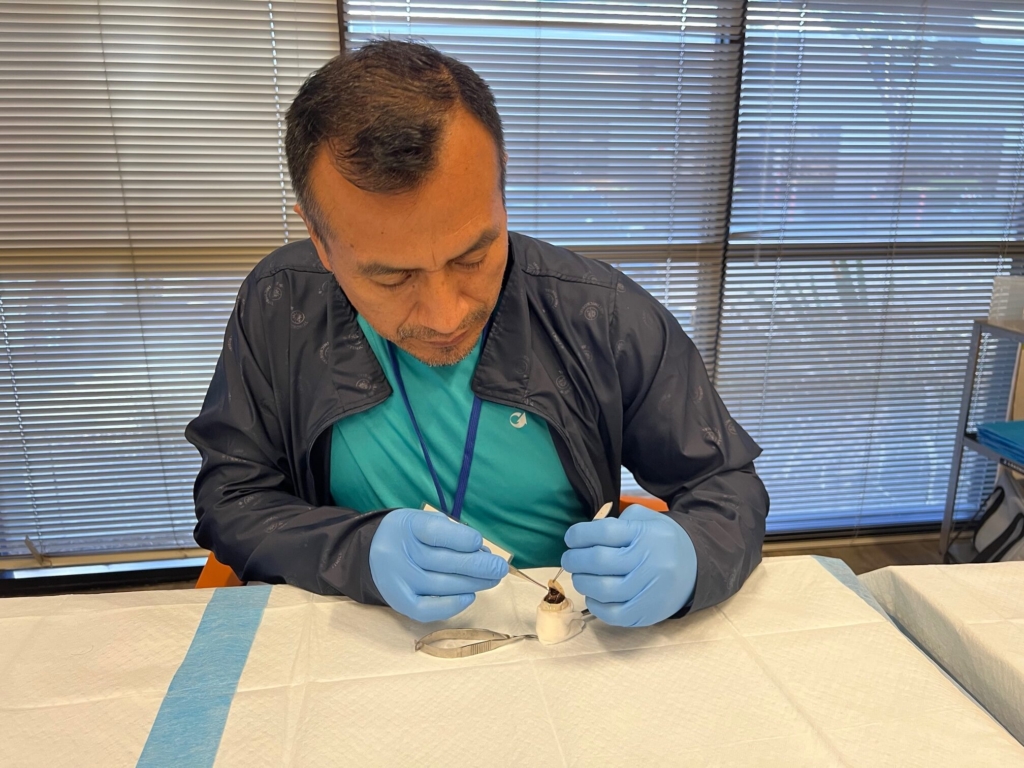
We felt so fortunate to be a part of this training project with ORBIS International and were proud to present each person with a certificate for completing our “Introduction to Eye Banking” course. Thank you to ORBIS International, Meryem and her team, and our guests from Bolivia, Chile and Peru. We look forward to next time!
